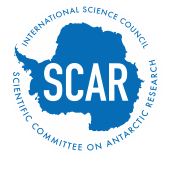|
Name ID: 110328
Place ID: 10164
in the central part of Pensacola Mountains, rising to 1975m at Mount Hawkes (q.v.) and extending from Spanley Rocks (q.v.) in the N to Final Rock (q.v.) in the S, bounded to the W by Schmidt Hills (q.v.) and Williams Hills (q.v.) and to the E by Washington Escarpment (q.v.) and associated features, was photographed from the air by USN, 13 January 1956, on a non-stop flight from McMurdo Sound, Ross Dependency, to the Weddell Sea and back; named after the P2V-2N Neptune aircraft (Lieut. Cdr. J. H. Torbert, USN, Mount Torbert, q.v.) on the flight (NGS map, 1957b; [referring to W half of Pensacola Mountains] AGS map, 1962b; [in 83°45'S 52°00'W] APC, 1964, p.4; [correctly shown] USGS sheets SU 21-25/13 and SV 21-30/1, 1969; APC, 1977, p.24); surveyed from the ground by USGS and rephotographed from the air by USN, 1963-64. Khrebet Nept'yun (Soviet Union. MMF chart, 1961). "Camp Neptune", referring to the US refuge established in November 1963 at 615m on the E side of Roderick Valley in 83°34'S 57°24'W, but now buried in snow (USGS sheet SU 21-25/13, 1969). Cordillera Santa Teresita, so called by AAE after Saint Theresa (Argentina. IGM map, 1966; Pierrou, 1970, p.654). Khrebet Neptyon (Soviet Union. MMF map V-21-V-30, 1972).
|
|
Name ID: 129332
Place ID: 10164
A mountain range, 70 mi long, lying WSW of Forrestal Range in the central part of the Pensacola Mountains. The range is comprised of Washington Escarpment with its associated ridges, valleys and peaks, the Iroquois Plateau, and the Schmidt and Williams Hills. It was discovered and photographed on Jan. 13, 1956 on a USN transcontinental plane flight from McMurdo Sound to Weddell Sea and return. Named by US-ACAN after the Navy P2V-2N "Neptune" aircraft with which this flight was made. The entire Pensacola Mountains were mapped by USGS in 1967 and 1968 from ground surveys and U.S. Navy tricamera aerial photographs taken in 1964.
|

